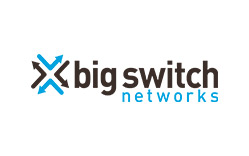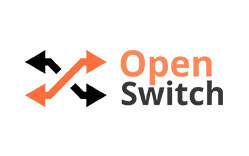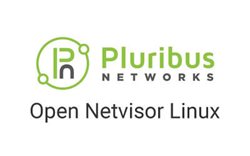The more choice we have, the less satisfied we become however we do need choice to feel freedom and autonomy when decision-making. This is known as the paradox of choice and rings true when buying a packet of crisps (or chips for my US friends), one of Heinz’s 57 varieties or selecting a NOS that best suits your needs. Consumer choice in this sphere is essential as every network requires something a little different to suit their very specific environmental demands. It is this choice that has driven creation, innovation, price and also keeps everyone in this market on their toes. Innovate or die was the cry!
In previous blogs in the open networking series we have discussed the basics of SDN, edge networks and also beginner’s Kubernetes. Today we are going to look at the movers and shakers in the NOS vendor world. The market has come a very long way in the 10 years since Pica8 launched one of the first network operating systems for whitebox in 2009, with every use case catered for and multiple options within each use case. This in itself creates a degree of complication when selecting the best fit to accompany your Edgecore, Quanta or Delta whitebox switch. In alphabetical order, here are the runners and riders;
Big Switch Networks

Big Switch Networks have developed Switch Light, a NOS based on ONL (which is covered later in this article). It is a Linux based, thin switching software solution which is one of the key parts to Big Switch’s cloud fabric solution. This allows for management and automation at scale for hybrid cloud using an SDN controller. They also offer Big Monitoring Fabric which is an end-to-end visibility and security solution for applications.
bigswitch.com
Cumulus Networks

Probably the most well-known of the NOS vendors, Cumulus are a well-respected and a very well-run software company. Based on Debian, Cumulus Linux is primarily a Data Center NOS which allows you to automate, customize and scale the network with ease. Cumulus also offer a network operations tool called NetQ which gives you operational intelligence about the health of your data center in real time.
cumulusnetworks.com
IP Infusion
IPI as they are generally known, have an interesting story in th is domain. The company is around since 1999 and they originally created ZebOS from open source routing software called Zebra. IPI went on to sell ZebOS as an OEM product up until creating their own version of NOS called OcNOS. IPI have been very successful in recent years in their endeavors, partially down to their ability to leave the data center behind and tackle other markets. OcNOS’s ability to provide extensive protocol support for MPLS is proving invaluable.
is domain. The company is around since 1999 and they originally created ZebOS from open source routing software called Zebra. IPI went on to sell ZebOS as an OEM product up until creating their own version of NOS called OcNOS. IPI have been very successful in recent years in their endeavors, partially down to their ability to leave the data center behind and tackle other markets. OcNOS’s ability to provide extensive protocol support for MPLS is proving invaluable.
ipinfusion.com
Open Network Linux

Open Network Linux (ONL) is a completely free, open source NOS for bare metal switches from the Open Compute Project (OCP). The OCP mainly deal with hardware in the open networking world, but ONL acts as a foundational layer on top of the hardware which in turn allows end users to build their own NOS on top of whitebox switches. Big Switch’s Switch light OS is based on ONL.
opennetlinux.org
OpenSwitch

Another open source Linux-based NOS with this one coming from the Linux Foundation. As always with the Linux foundation, the goal is to create a community based on collaboration and innovation that benefits everyone.
openswitch.net
Pica8

One of the founding fathers in this area of networking, Pica8 have 2 different flavors of NOS. Both are called PICOS with an enterprise edition and an SDN edition. Again, this is a Debian Linux based NOS. Pica also offer an Ansible based automation framework that couples Zero-Touch Provisioning (ZTP) with ONIE to simplify installation and operation of the switches across the entire enterprise.
pica8.com
Pluribus Networks

Pluribus Networks and their Netvisor One open source operating system is an L2/L3 NOS with automated provisioning and management, along with embedded telemetry and advanced analytics. This NOS works for brownfield sites which means it does not have to be a rip and replace of the existing network. Pluribus also have a few other strings to their bow and their Adaptive Cloud Fabric is proving hugely popular in being able to create a controllerless fabric over multiple locations.
pluribusnetworks.com
SONiC

Software for Open Networking in the Cloud (SONiC) is the software used by Microsoft to power Azure. This means that it is coming from a hyperscaler who has already put it into large-scale production so it is battle-tested and hardened. SONiC is built on the Switch Abstraction Interface (SAI which Microsoft also created) which defines a standardized API. Microsoft have made SONiC open sourced and it is available to download free on GitHub.
azure.github.io/SONiC/
SnapRoute

Last but not least we have SnapRoute. The newest player in the NOS market, SnapRoute is very different to everything else out there at present. It is the first cloud native NOS, appropriately named CN-NOS and is a containerized, microservices based NOS with embedded Kubernetes. Created by two former Apple employees Adam Casella and Glenn Sullivan, their goal was to build a NOS by network guys for network guys. They have created a real stir in the market in their short time due in no small part to the excellent product and team they have assembled.
snaproute.com/
As always, I would be more than happy to share additional resources with you or for more technical information on products or SDN give me a shout also you can browse our Open Networking products here.
Slán go fóill,
Barry